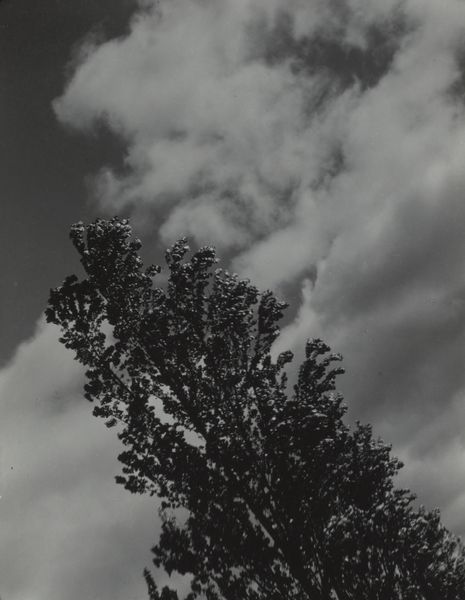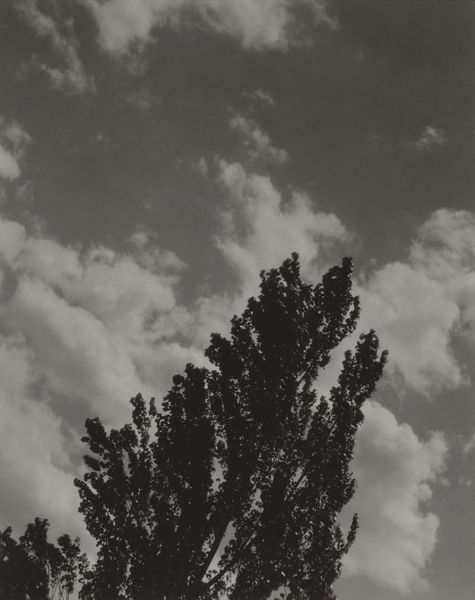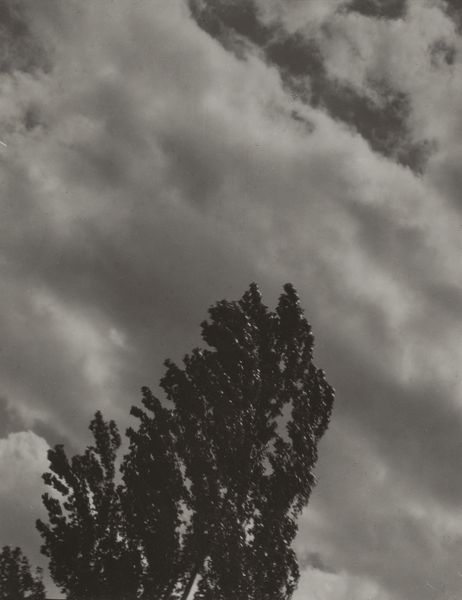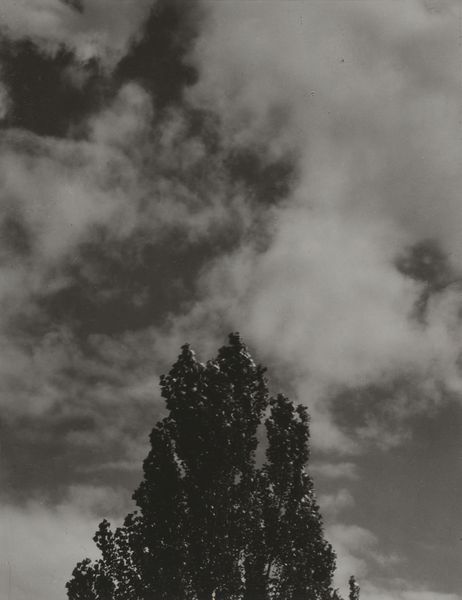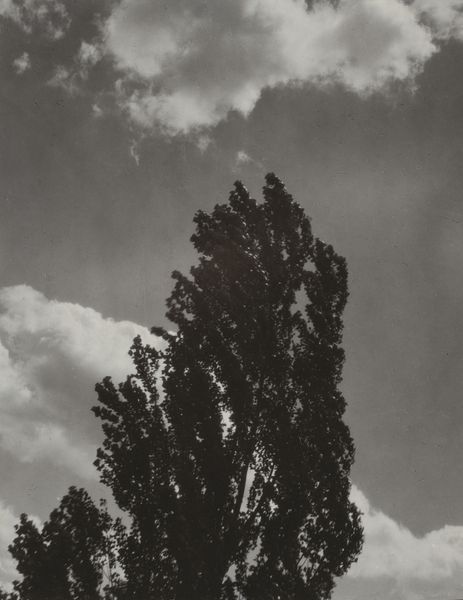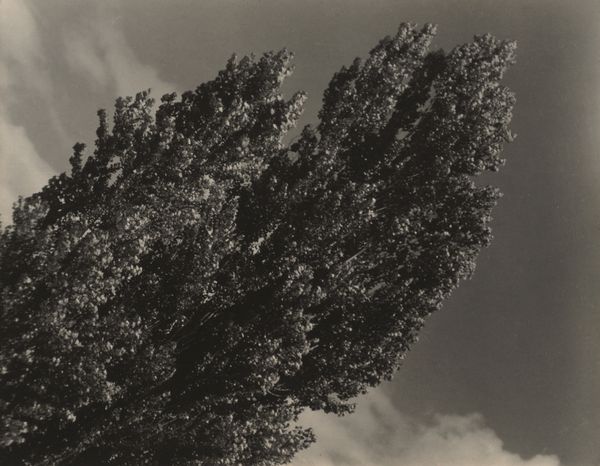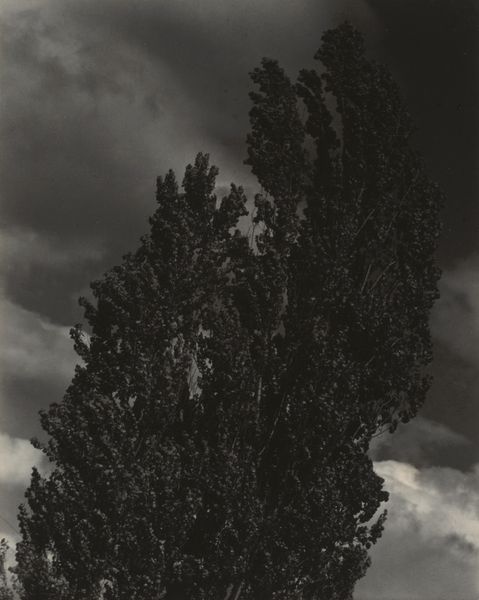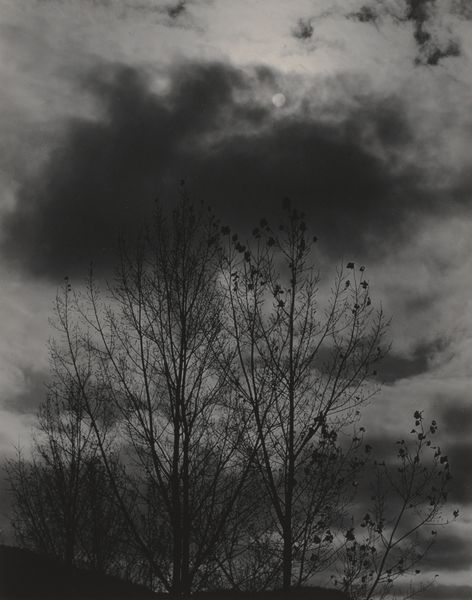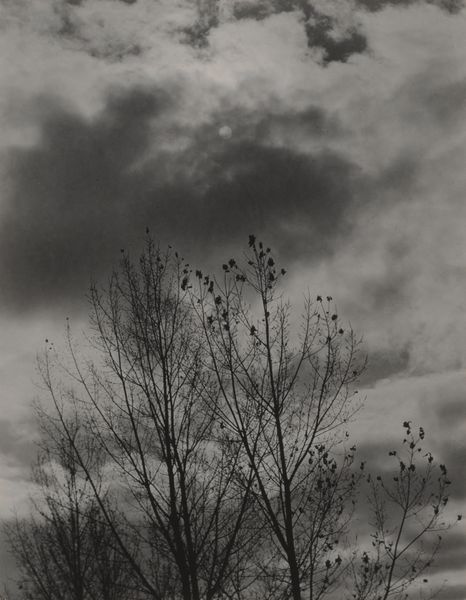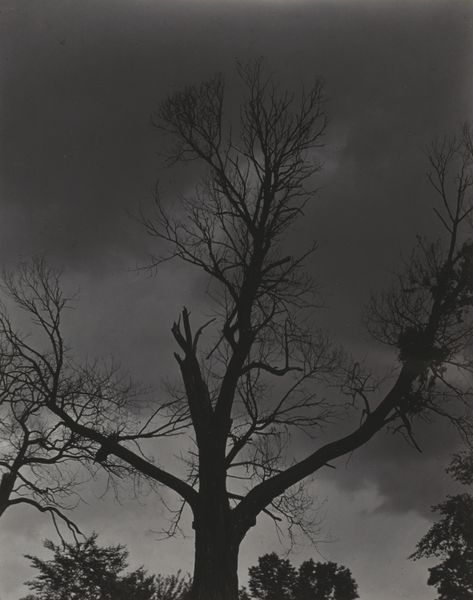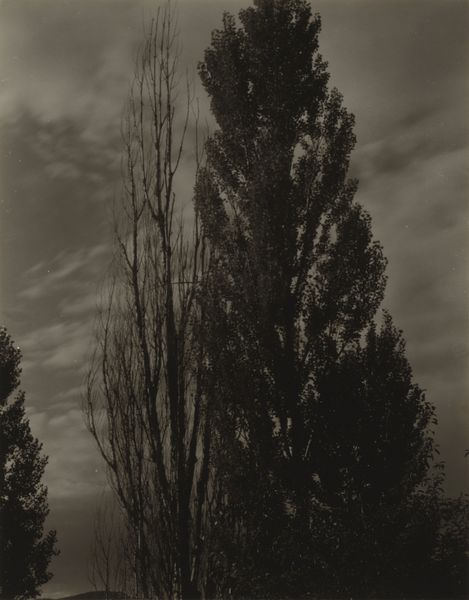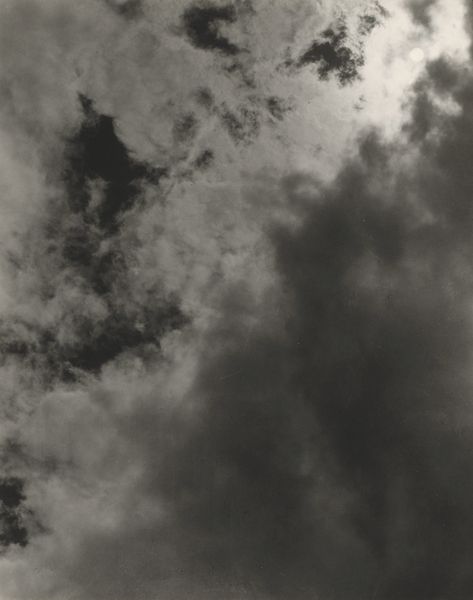
#
natural shape and form
#
black and white photography
#
snowscape
#
countryside
#
warm monochrome
#
outdoor scenery
#
monochrome photography
#
gloomy
#
monochrome
#
shadow overcast
Dimensions: image: 11.7 x 8.8 cm (4 5/8 x 3 7/16 in.) sheet: 12.6 x 10.1 cm (4 15/16 x 4 in.) mount: 34.4 x 27.6 cm (13 9/16 x 10 7/8 in.)
Copyright: National Gallery of Art: CC0 1.0
Curator: This is Alfred Stieglitz's "Portrait—K.N.R., No. 4 or Songs of the Sky C4," a photograph taken in 1923. Editor: My first thought is melancholy. It's stark, almost minimalist, with the skeletal tree reaching up into that somber sky. The tones are so subdued. Curator: Stieglitz, particularly in his later series of cloud photographs called "Equivalents," aimed to express his inner emotional states through natural forms. He saw the sky and clouds as embodying the full spectrum of human feeling, connecting inner and outer landscapes. There is an implied self-portrait through these images. Editor: I find that interesting. Looking at the physical craft of it—the silver gelatin print, most likely—makes me wonder about the specific weather conditions that day, the particular photographic paper he selected and the choices made in the darkroom. These details, I feel, truly communicate the image's meaning. Was the production sustainable for its time, and what impact would this image have had on the perception and availability of art? Curator: Definitely! This particular piece comes from a time when Stieglitz was moving away from sharp, documentary-style photography to something more subjective and symbolic. He was exploring the concept of equivalence—the idea that a photograph could stand in for something else, often an emotion or a state of mind. What socio-political context allowed this artist to embrace new technology? How do we explore questions of access through both art production and viewership? Editor: Precisely, the shift in Stieglitz's practice shows how an artist working with the resources at hand—both material and societal—can transform our perception. The act of making becomes an integral part of interpreting his work, and his status made it possible. Curator: Absolutely. Reflecting on Stieglitz's work now, particularly this evocative piece, invites us to consider photography as a powerful medium for expressing personal narratives but also reflecting the political mood of the moment. How many barriers were removed in this artist's trajectory because of their identity? Who gets access to art-making now? Editor: And how the material constraints and possibilities shape the meaning we derive. Examining art through both lenses deepens our appreciation.
Comments
No comments
Be the first to comment and join the conversation on the ultimate creative platform.

